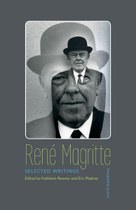FullStop: Rene Magritte
 The Belgian surrealist painter René Magritte (1898 – 1967) might not have enjoyed the rock star fame and longevity of near contemporaries like Salvador Dalí or Pablo Picasso — or served as the complete game changer that was his impressionist hero, Édouard Manet — but for what he did achieve on his canvases, Magritte had the exceeding power of knowing exactly what he was doing and putting it into precise words. Language, in fact, is a primary element in several of his best-known paintings, and a subject they contemplate. His life’s work positioned Magritte as a poet of images, a collagist of familiar objects repurposed to create visual metaphors that literary surrealists, the followers of Stéphane Mallarmé, eagerly took up. What isn’t known by the average English-speaking museum goer is that while André Breton might be the most visible surrealist scribe, Magritte, too, generated a significant number of short manifestos and experimental prose pieces. He also frequently made himself available for interviews throughout his career, as paintings that were once sold in the 1920s for a thousand francs were sold again in the ‘50s and ‘60s for millions. Eleven years after the painter’s death, his complete writings were published in French. However, an English-translated selection of these pieces and interviews has been absent from the record until now.
The Belgian surrealist painter René Magritte (1898 – 1967) might not have enjoyed the rock star fame and longevity of near contemporaries like Salvador Dalí or Pablo Picasso — or served as the complete game changer that was his impressionist hero, Édouard Manet — but for what he did achieve on his canvases, Magritte had the exceeding power of knowing exactly what he was doing and putting it into precise words. Language, in fact, is a primary element in several of his best-known paintings, and a subject they contemplate. His life’s work positioned Magritte as a poet of images, a collagist of familiar objects repurposed to create visual metaphors that literary surrealists, the followers of Stéphane Mallarmé, eagerly took up. What isn’t known by the average English-speaking museum goer is that while André Breton might be the most visible surrealist scribe, Magritte, too, generated a significant number of short manifestos and experimental prose pieces. He also frequently made himself available for interviews throughout his career, as paintings that were once sold in the 1920s for a thousand francs were sold again in the ‘50s and ‘60s for millions. Eleven years after the painter’s death, his complete writings were published in French. However, an English-translated selection of these pieces and interviews has been absent from the record until now.
By: Christopher Wood
Story Date: 2016-11-25T05:51:00+00:00



